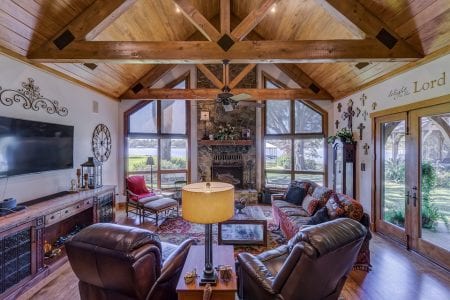 Everyone who decided to start building a house or a cottage wants his house to stand for a long time and serve well. The traditional material for the walls of low-rise buildings has been a tree since ancient times. Wood as a material has many important advantages. Wood is quite easy to “glue”, it is easily connected with nails, screws, etc. It is well processed and lends itself to finishing. From the point of view of the ratio of density and strength, wood can be compared with metals. The walls of the house or cottage must be durable, have good soundproofing qualities, have, perhaps, less weight, provide in the rooms a constant temperature regime necessary for the building.
Everyone who decided to start building a house or a cottage wants his house to stand for a long time and serve well. The traditional material for the walls of low-rise buildings has been a tree since ancient times. Wood as a material has many important advantages. Wood is quite easy to “glue”, it is easily connected with nails, screws, etc. It is well processed and lends itself to finishing. From the point of view of the ratio of density and strength, wood can be compared with metals. The walls of the house or cottage must be durable, have good soundproofing qualities, have, perhaps, less weight, provide in the rooms a constant temperature regime necessary for the building.
Its disadvantages are only sedimentary deformation in the first one and a half to two years and low fire resistance. However, it is now possible to cope with both shortcomings. To increase the fire resistance, special tools are used, which impregnate the tree. This makes it possible to increase the fire resistance to such an extent that even at high temperatures the tree will fester, but not burn. The most comfortable for sanitary and hygienic requirements (including those having a low thermal conductivity) are the paved and chopped walls of coniferous trees.
Coniferous species are more suitable than deciduous for the reason that they have a more regular form of the trunk and are less prone to decay.
The main parameters that determine the longevity for a tree are:
- strength
- density
- resistance to cracking
- resistance to decay
- wear resistance
- low knots
- low hardness
- high taunts
- ease
Strength of wood is determined by the type of wood, density, moisture, the presence of defects.
Humidity is free and bound. A feature of free moisture is that it evaporates from the wood very easily. In order to check this, it is enough to remember that the drenched tree dries up quickly enough in a few hours. Associated moisture, on the contrary, evaporates slowly, and in order to dry the tree, without resorting to the help of special technologies, it may take several years. As the amount of bound moisture increases, the strength of the wood becomes smaller. When the amount of moisture passes the hygroscopic limit (30%), the humidity ceases to affect the strength of the wood. Moreover, the practical value of the difference between free and bound moisture lies in the fact that upon evaporation of the first, only the heaviness of the tree changes, and upon evaporation of the second, the volume changes, that is, shrinkage occurs. Reducing the volume of wood when it dries up varies in different directions. The thickness is greater than the length. In the table, tree species are divided into 3 groups by the value of the volume shrinkage coefficient.
When drying the tree, the moisture evaporates unevenly. First, moisture evaporates from the outer layers, and then from the inner layers.
This non-uniform evaporation of moisture results in the appearance of an internal stress in the wood, stretching it on the surface and compressing it inside, as a result of which cracks can appear on the tree.
With the density and humidity of wood is closely related to its ability to retain metal fasteners. The higher the density of wood, the higher the resistance to pulling a nail or a screw. Humidity makes it easier to drive nails into the wood.
Hardness is the ability of wood to resist penetration of solids into it. According to the degree of hardness, wood species can be divided into 3 groups:
Soft: Pine, spruce, cedar, fir, aspen, linden, alder, poplar.
Solid: Birch, elm, ash, karagach, maple, apple.
Very hard: Hornbeam, dogwood, boxwood, vachellia white, birch.
Wear resistance of wood is its ability to resist fracture in the process of friction. Here there is such a regularity: the more hardness and density of wood, the less its wear.
Rot occurs as a result of the vital activity of various fungi that destroy the wood and in most cases render it unfit for work.
Knot is the presence of the bases of branches (knots) of living or dead during growth. Knotty breaks the uniformity of the structure of the wood, reduces its strength, hinders processing.
Lightness is a property of wood, which is beneficial in construction in combination with other qualities.
Image credit: shadowfirearts



